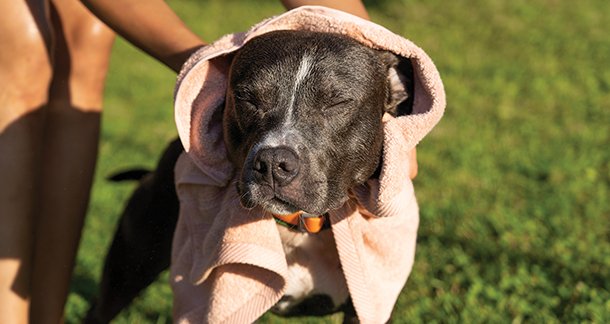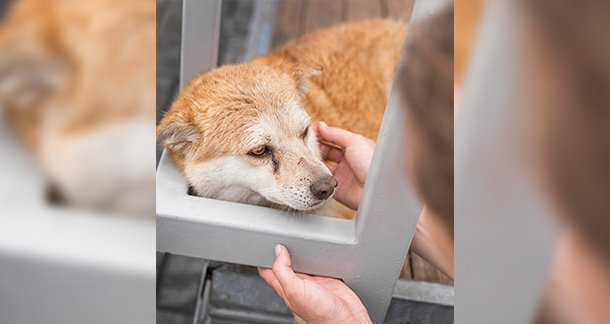Hypothermia in dogs is a serious condition. This condition takes place when a dog’s body temperature drops below the normal range of 100-102.5°F (37.8-39.2°C). This drop is not normal in dogs, as they may suffer from many unwanted symptoms, which can also cause brain damage, coma, and even death. Most dogs are diagnosed with hypothermia if they are more exposed to cold weather or inadequate shelter. So, this guide will help you recognise the signs and prevent them at the beginning. We will explore how hypothermia in dogs occurs, outline emergency treatment options, and discuss preventive measures.
Signs of Hypothermia in Dogs
Identifying its signs is a must before any intervention, and remember that it can vary depending on the condition’s severity.
- Mild Hypothermia (90-99°F):
- Shivering
- Curling up to conserve heat
- Cold extremities (ears, paws)
- Moderate Hypothermia (82-90°F):
- Sluggishness and lethargy
- Weakness and delayed reflexes
- Rapid breathing followed by slow breathing
- Severe Hypothermia (<82°F):
- Stopped shivering
- Muscle stiffness
- Fixed, dilated pupils
- Loss of consciousness
This is how you can act quickly and protect your pets from life-threatening situations because untreated hypothermia can be a reason for cardiac failure or even death. You would not believe it, but just 30 minutes of exposure to cold temperatures can make your dog susceptible to hypothermia. This can particularly happen when they are wet or have short coats.

At-Risk Breeds
Certain breeds are more susceptible to hypothermia due to their size, age, or coat type. Here’s a breakdown of at-risk breeds:
| Breed Type | Risk Factors |
| Small Breeds | Less body mass to retain heat |
| Short-Haired Dogs | Lack of insulation against cold |
| Senior Dogs | Weakened immune system and reduced ability to regulate temperature |
| Puppies | Immature systems make them vulnerable to cold |
Smaller breeds like Chihuahuas and toy breeds are particularly vulnerable due to their size and lower fat reserves. Plus, senior dogs and puppies often have less thermoregulation capabilities. So, this is how they become more susceptible to cold temperatures.
Preventive Measures
Some proactive measures are needed to prevent this:
- Dress Appropriately: Use dog jackets or sweaters designed for warmth.
- Limit Outdoor Time: Keep walks short during extreme cold; consider indoor activities instead.
- Provide Shelter: Ensure outdoor dogs have insulated shelters that protect against wind and moisture.
- Dry Off After Walks: Always dry your dog thoroughly if they get wet before allowing them back inside.
After this much consideration, you also need to monitor weather conditions closely. This is because if temperatures drop significantly or there is snow or ice. Plus, toys or training exercises can help keep your dog mentally stimulated while staying warm. Still, if you want to be more confident about the situation, you can opt for regular veterinary check-ups. Do not forget to provide your dog with a well-balanced, nutrient-rich diet.

Emergency Treatment
Take immediate action if somehow you are able to identify that your dog is suffering from hypothermia. First, move your dog to a warm environment; you can wrap them in warm blankets or towels. This will help them raise their body temperature gradually. Make sure that their fur is not wet, so dry them thoroughly with a towel or a low-heat hairdryer.
Home treatment is more than enough for mild cases, but moderate to severe cases require veterinary attention. They will treat your dog with warmed intravenous fluids or apply other warming techniques. It mainly depends on the severity of the condition. Remember that rewarming must be done carefully to avoid shock or further complications, so you have to measure continuously for that. Monitor their heart rate and breathing closely too during this process. Still, you have to seek emergency veterinary care if your dog’s condition does not improve within a reasonable time frame.
Understanding the Long-Term Effects of Hypothermia
Everyone knows the immediate danger of low body temperature in dogs, but hypothermia can have lasting effects as well. Some dogs may experience complications even after successful rewarming. Organ damage is one of the main concerns due to severe cold temperature exposure. This is because cold temperatures block blood flow to vital organs and can eventually lead to tissue damage. Recovering from hypothermia is also a challenging phase for dogs, as you may notice changes in their behaviour or physical health. They may develop permanent anxiety related to cold weather conditions even after successful recovery. That’s why tracking your dog’s behaviour post-recovery is your responsibility, and consult with a veterinarian if any unusual symptoms arise.

Moreover, some studies suggest that repeated episodes of hypothermia can lead to other health issues over time. For example, chronic exposure could weaken the immune system or exacerbate pre-existing conditions such as arthritis in older dogs. So, you have to give consistent warmth and comfort during the colder months while taking your dogs to regular veterinary check-ups as well.
Conclusion
Hypothermia in dogs is a preventable but serious condition at the same time. It asks for your timely action and regular health measures. Plus, now you better understand how to identify its signs and implement preventive measures. In the end, do not forget to consult your veterinarian for specific guidance according to your dog’s needs.

